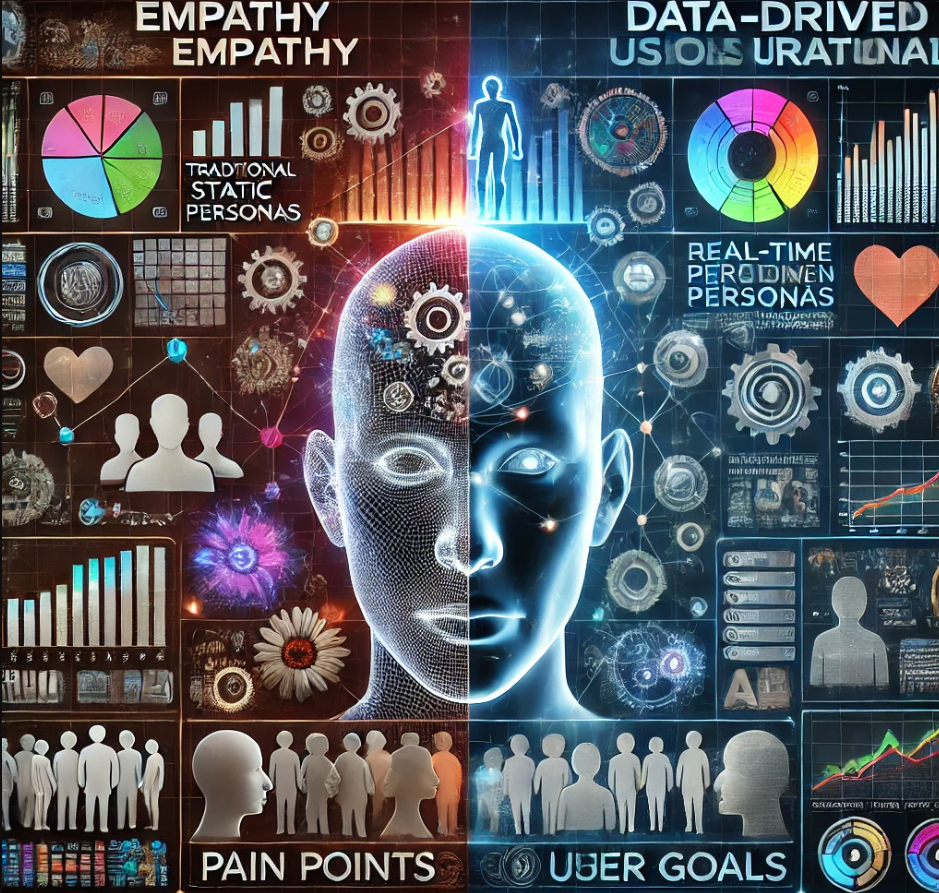
Data-driven personas are transforming the way organizations understand their users by combining traditional persona insights with the power of digital analytics. This approach introduces a new layer of precision, enabling businesses to develop a deeper understanding of their audiences in real-time, fostering empathy alongside data-driven decision-making.
Traditional personas, which have been utilized in fields such as marketing, design, and software development for decades, generally rely on qualitative data gathered from focus groups, surveys, or interviews. These personas are typically static representations of users, offering demographic information, pain points, goals, and other personal attributes. While they provide a humanized view of the user, they are often limited by the subjective nature of their creation and the time-consuming processes involved. Additionally, because they are based on snapshot data, traditional personas can become outdated as user behaviors and preferences shift over time.
Now we have data-driven personas—interactive, dynamic profiles created through the aggregation and analysis of large amounts of digital data. These personas are derived from a variety of online sources, including social media, web analytics, and system user data, transforming them into real-time, evidence-based profiles. Unlike traditional personas, which are often generalized, data-driven personas are algorithmically generated, enabling the representation of precise user segments based on actual behavior. This not only increases the accuracy of the personas but also ensures that they remain relevant as user preferences evolve, leverage advance AI and Large Language Models (LLMs).
One of the key benefits of data-driven personas is their ability to bridge the gap between qualitative understanding and quantitative precision. By incorporating real-time data, these personas provide businesses with a more granular understanding of their audiences. For example, a data-driven persona might offer insights into a user’s purchasing habits, preferred communication channels, or even the time of day they are most likely to engage with a brand. This information enables businesses to tailor their marketing strategies more effectively, leading to improved user experiences and higher conversion rates.
Moreover, the shift from flat, static persona profiles to interactive data-driven systems enhances decision-making across various organizational levels. For strategic planning, data-driven personas offer high-level insights into audience segments, helping executives make informed decisions about which user groups to target. For marketers and content creators, these personas provide actionable data that can be used to personalize campaigns, refine messaging, and optimize budget allocation. This integration of personas and analytics systems allows for a seamless transition from user understanding to implementation, supporting the execution of data-driven strategies in real-time.
Another significant advantage of data-driven personas is their responsiveness to changes in user behavior. In the digital age, where user preferences and behaviors can shift rapidly, businesses need tools that can adapt just as quickly. Traditional personas are often created months in advance and may not reflect the most current user data by the time they are implemented. In contrast, data-driven personas are continuously updated as new data is collected, ensuring that businesses are always working with the most accurate and relevant information.
However, data-driven personas are not without their challenges. One potential drawback is the reliance on digital data, which may not capture the full scope of user behavior, particularly offline interactions. Additionally, the use of large datasets and complex algorithms may require significant resources and expertise to implement effectively. There is also the question of whether data-driven personas, which are grounded in numerical insights, can truly replace the empathetic understanding provided by traditional personas.
Despite these challenges, the advantages of data-driven personas are difficult to ignore. By merging the qualitative depth of traditional personas with the quantitative rigor of analytics, businesses can achieve a more comprehensive view of their users. This combination allows for greater flexibility in marketing and product design strategies, enabling businesses to respond more effectively to user needs while maintaining a personal connection.
As businesses continue to embrace digital transformation, the role of data-driven personas will likely grow in importance. These personas offer a powerful tool for enhancing user understanding, improving decision-making, and driving more personalized and effective marketing strategies. By combining empathy with data-driven insights, organizations can create user experiences that are both meaningful and optimized for success in a rapidly changing digital landscape.
Read the research paper!
Jansen, B. J., Salminen, J., and Jung, S.G. (2020) Data-Driven Personas for Enhanced User Understanding: Combining Empathy with Rationality for Better Insights to Analytics. Data and Information Management. 4(1), 1-17. https://www.sciencedirect.com/science/article/pii/S2543925122000560
